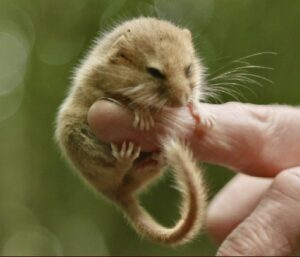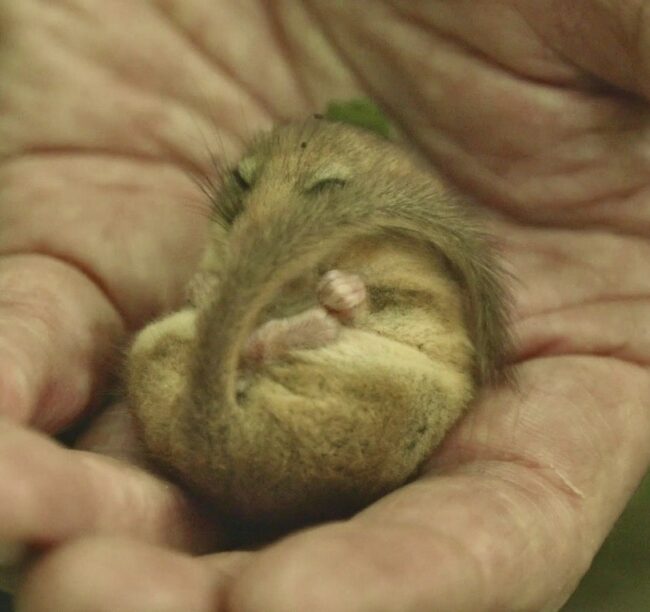The Hazel Dormouse : a woodlands TV film (Conservation and Monitoring of Hazel Dormice).

The hazel dormouse is an arboreal species, that is to say, it spends a large part of the year up in the trees. It is also largely nocturnal in habit. Its favourite foods are hazelnuts, berries and insects.
Their active period is between Spring and Autumn, and during this time they build a ‘nest’. These nests tends to made from ‘local materials’ usually found within a few metres of the nest. Bracken, hazel, beech leaves and grasses are frequently used, though honeysuckle and other species may be incorporated. The nests are found in trees in deciduous woodlands, thick scrub, and hedgerows, feeding on local available materials depending on the time of year. They tend not to move great distances, generally having a range of up to a hectare.
With the approach of colder weather and limited food supplies, the dormouse tends to move down to the ground and build another nest ready for hibernation. The winter nest is similar to that built in the canopy with an outer layer of leaves and core of some ‘woven’ material. Hibernation is a dangerous time for a dormouse. If the dormouse has not accumulated enough fat reserves then it will simply run out of energy during the cold weather. It has been estimated that a dormouse loses about 0.5% of its body weight every day during hibernation. Whilst ‘asleep’, the dormouse is easy prey for a predator and could also die as a result of trampling by a large animal [the nests are inconspicuous], or indeed woodland management activities.

Dormouse in a state of torpor.
Interestingly, during the dormouse’s active period of Spring and Summer, the dormouse can enter into a state of torpor when food is scarce. This allows them to save energy through dropping body temperature and heart rate. So hazel dormice can spend a lot of the year ‘asleep’ in one form or another.
Woodlands TV has just produced their first film about the hazel dormouse - which can be viewed below. This film was made in collaboration with the People’s Trust for Endangered Species (PTES). More information on the PTES’ monitoring and conservation of hazel dormice can be accessed by clicking here, Note that a licence is required for handling these special animals, details in this link :-
https://www.gov.uk/government/publications/hazel-dormice-survey-or-research-licence-level-1.
Interesting fact : Though Ireland has no native dormouse, the hazel dormouse was found in County Kildare in 2010.
Further films by Woodland TV can be found here : -https://www.youtube.com/@WOODLANDSTV

Leave a comment